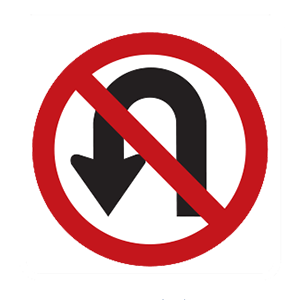2025 Iowa Permit Test 15
The following questions are from real DMV written tests. These are some of the actual permit questions you will face in Iowa. Each permit practice test question has three answer choices. Select one answer for each question and select "grade this section." You can find this button at the bottom of the drivers license quiz. For a complete list of questions and answers for Iowa please visit https://cheat-sheets.dmv-written-test.com/en/iowa/car.
Number of Tests
Number of Question
Passing Score
17. Your vehicle's stopping distance increases when stopping:
Explanation
Stopping distances increase on wet or icy roads. Stopping distances also increase on road surfaces covered in loose gravel or stones.
18. Always signal when:
Explanation
Always use the proper turn signal when changing lanes, pulling into or out of a parking space, or pulling into traffic from an alley or parking area. Communicate with other drivers on the road to help prevent accidents.
19. This road sign means:

Explanation
Regulatory signs provide notice to road users of traffic laws that must be obeyed. This sign tells drivers that it is prohibited to make a U-turn.
20. What does a traffic signal with a yellow left arrow indicate?
Explanation
When a protected turn arrow changes from green to yellow, drivers must prepare to yield to oncoming traffic. A yellow arrow indicates that the protected left turn is ending.
21. When backing up:
Explanation
When backing up, place your right arm on the back of the passenger seat and look directly through the rear window. Do not depend on your rearview or side mirrors as mirrors do not show directly behind your vehicle. Only drive in reverse at a low speed.
22. A U-turn is not permitted:
Explanation
You must never turn around while on or near any curve or hill. You may not be able to see oncoming traffic or pedestrians and may cause a collision.
23. If you have an argument with another person and you are angry, you should:
Explanation
Your emotions affect your ability to drive safely. If you are overly angry, excited, afraid, worried, or depressed, you should give yourself time to calm down before operating a vehicle. You need to be able to mentally focus on driving without thinking about the things that made you upset.
24. Which of the following statements are true?
Explanation


